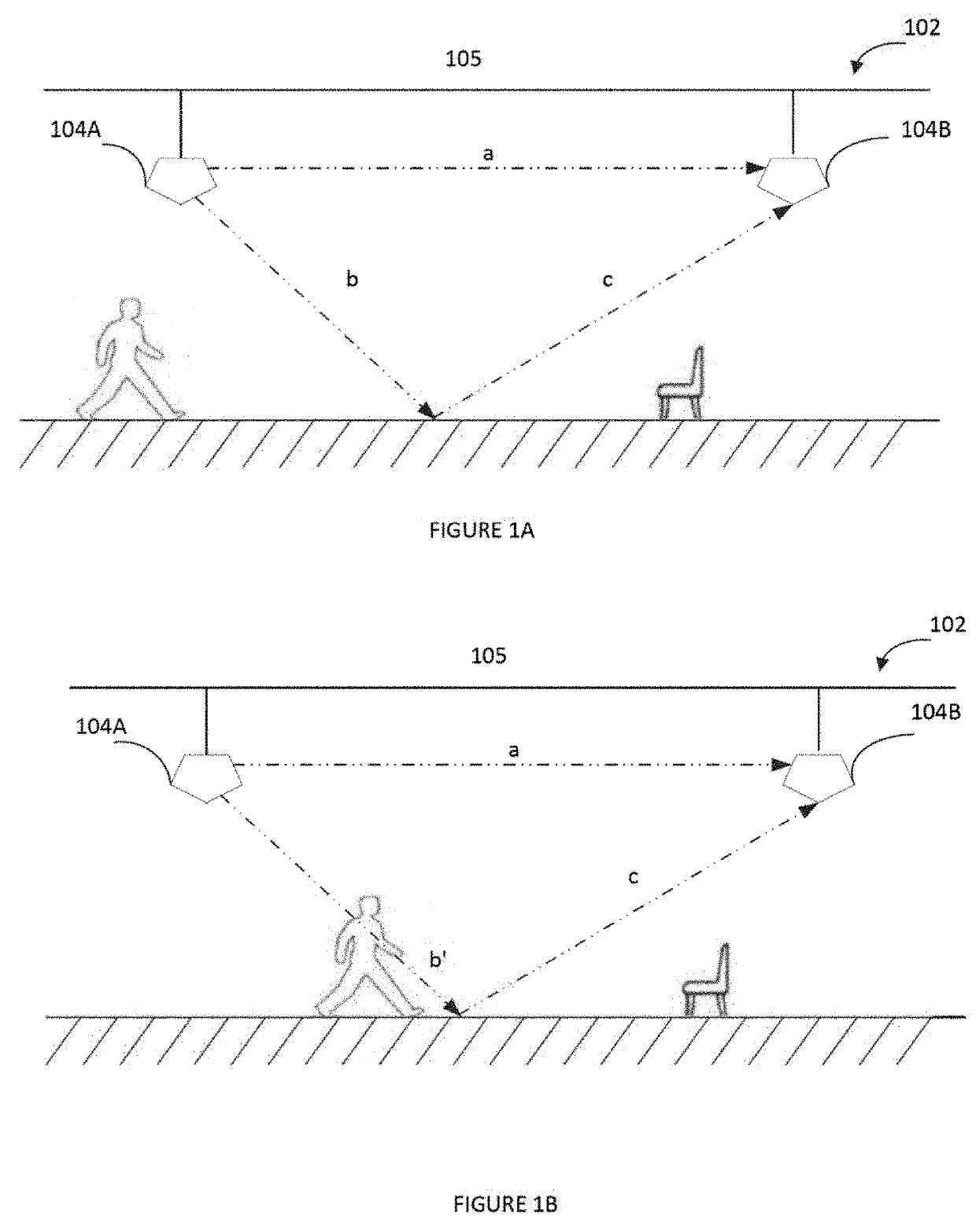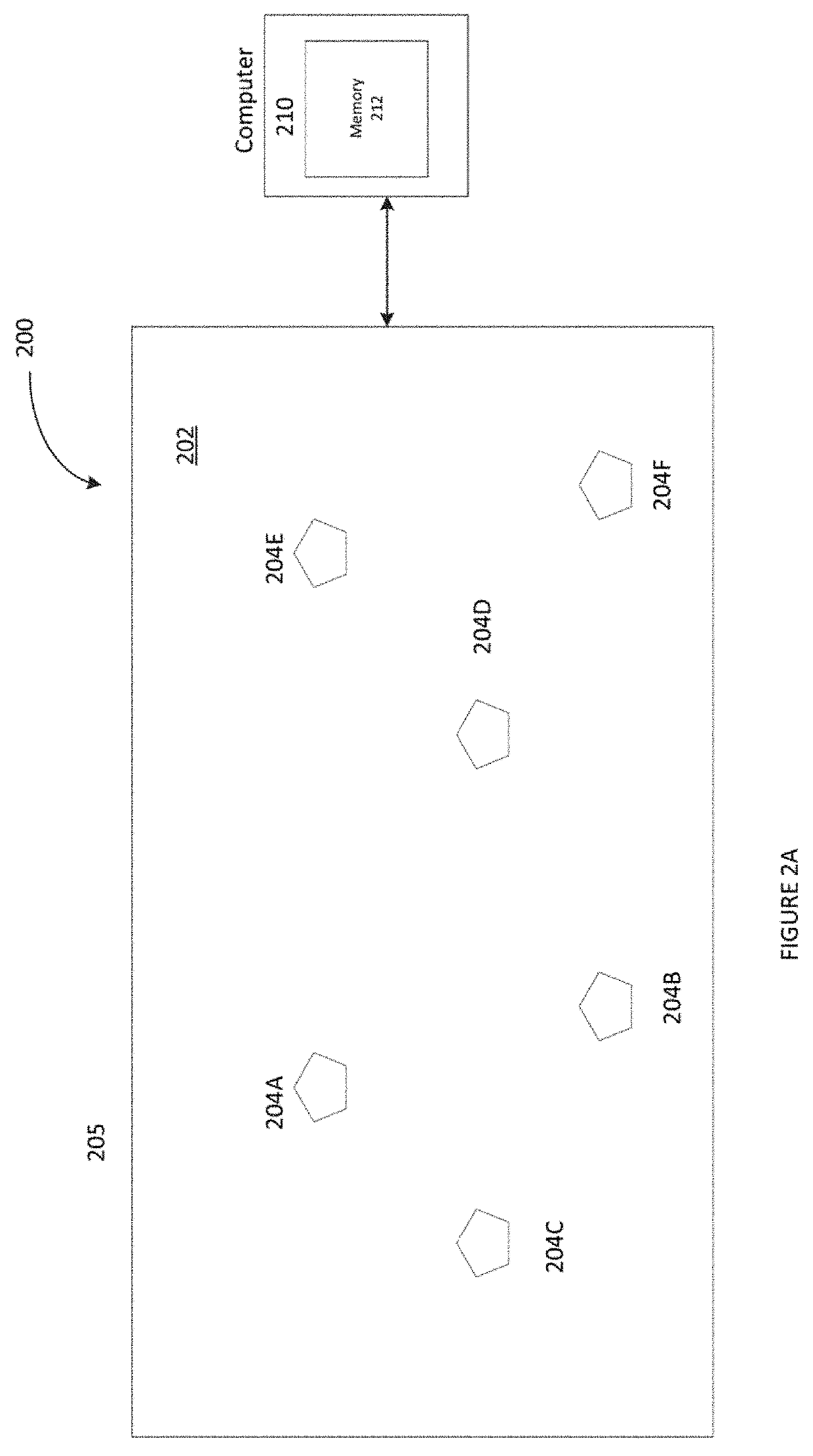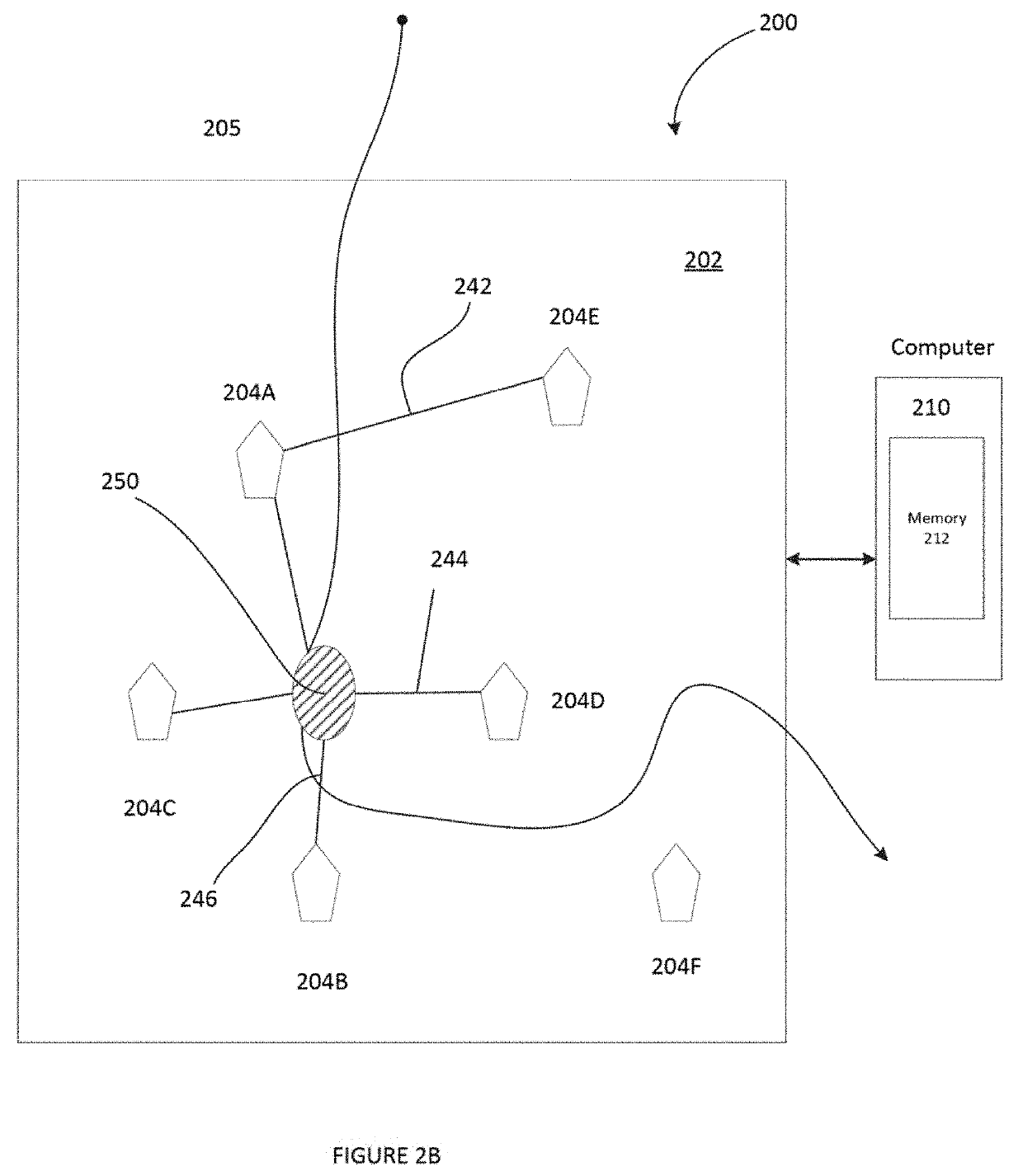Occupancy detection in a radio frequency wireless communication network
occupancy detection technology, applied in the field of occupancy detection in a radio frequency wireless communication network, can solve the problems of ineffective indoors, large amount of memory for storing data, and large number of dedicated sensors in the video sensor monitoring system
- Summary
- Abstract
- Description
- Claims
- Application Information
AI Technical Summary
Benefits of technology
Problems solved by technology
Method used
Image
Examples
Embodiment Construction
[0025]In the following detailed description, numerous specific details are set forth by way of examples in order to provide a thorough understanding of the relevant teachings. However, it should be apparent that the present teachings may be practiced without such details. In other instances, well known methods, procedures, components, and / or circuitry have been described at a relatively high-level, without detail, in order to avoid unnecessarily obscuring aspects of the present teachings.
[0026]To provide improved occupancy detection in an area of a network, e.g. a radio frequency (RF) ad hoc wireless mesh network of a lighting system or the like, the present disclosure includes a system and method for exploiting properties of a configuration of the RF wireless network to detect an occupant in the area. Thus an occupancy is detected based on measurements of RF perturbations in an area or space and the properties.
[0027]Referring to FIG. 1A, there is illustrated an example of a multipa...
PUM
 Login to View More
Login to View More Abstract
Description
Claims
Application Information
 Login to View More
Login to View More - R&D
- Intellectual Property
- Life Sciences
- Materials
- Tech Scout
- Unparalleled Data Quality
- Higher Quality Content
- 60% Fewer Hallucinations
Browse by: Latest US Patents, China's latest patents, Technical Efficacy Thesaurus, Application Domain, Technology Topic, Popular Technical Reports.
© 2025 PatSnap. All rights reserved.Legal|Privacy policy|Modern Slavery Act Transparency Statement|Sitemap|About US| Contact US: help@patsnap.com



